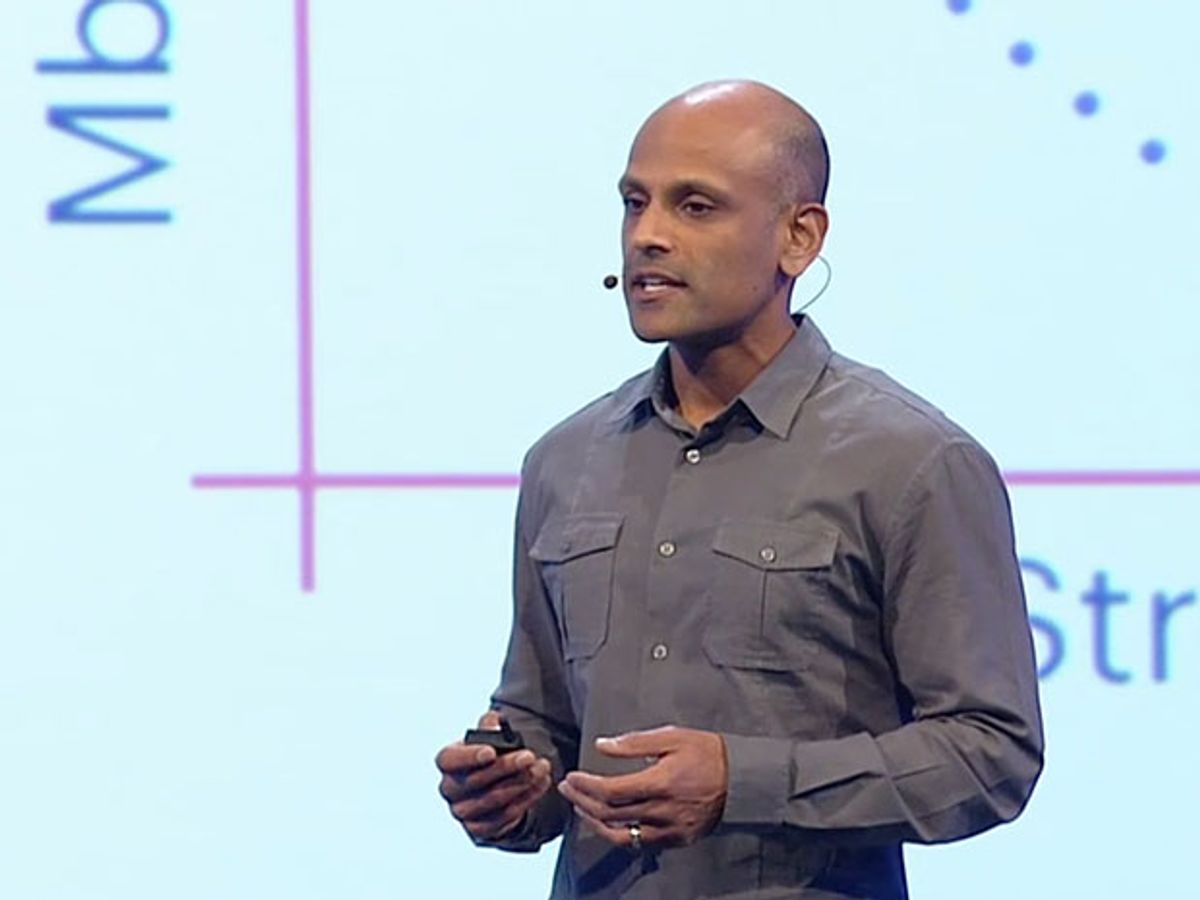Facebook’s overriding goal is to have everybody in the world sharing everything all the time. And that takes technology for fast, seamless, constant connectivity—technology that, it seems, wireless carriers aren’t developing nearly quickly enough.
So today, at Facebook’s F8 developer’s conference, vice president of engineering Jay Parikh announced two projects coming out of what the company calls its Connectivity Lab: Terragraph and Aries. Terragraph will use 60-gigahertz WiGig technology for fast internet in dense urban areas; Aries is intended to give rural cell towers better reach and more capacity using a version of a technology called Massive MIMO. Facebook plans to make both innovations open to the wireless research community.
Here’s a little more detail, as provided by Facebook under embargo before today’s announcement.
Terragraph: Terragraph’s WiGig approach uses WiGig, or IEEE 802.11ad, which operates in the 60 GHz frequency range (Wi-Fi operates in the 2.4 GHz and 5 GHz range), with data transmission rates using current technology of 7 Gb per second, some 10 times faster than today’s Wi-Fi. However, WiGig sacrifices range and doesn’t pass through walls and other solid objects making it, to date, of limited use for communications outside of a single room. The Terragraph plan is to get around that limitation by using steerable arrays of antennas to avoid buildings and dodge general network interference from crowded frequencies. It will require transmitters placed every 200 to 250 meters throughout a city.
Says Parikh:
“60 GHz has always been frowned upon because it gets easily absorbed by water and oxygen—we take advantage of the fact that it doesn’t have a good range to minimimize interference and keep capacity high.”
The technology, the company said, combined with Wi-Fi access points for longer-range transmissions, is a low-cost way of rolling out street-level gigabit communications. Facebook is testing Terragraph on its Menlo Park campus, where it has been hitting multi-gigabit-per-second, transmission rates and is planning a trial in San Jose later this year. “It’s really exciting that we will be able to see this thing in the wild,” says Parikh, “and from there will expand to more cities around the world.”
Aries: Aries (Antenna Radio Integration for Efficiency in Spectrum) is Facebook’s attempt to cheaply and easily extend cellular communications networks from city centers to more rural areas as far as 40 kilometers away. The project uses Massive MIMO, a large antenna array designed to increase network capacity and to allow signals to travel further at lower power. To date, Facebook has built a proof-of-concept test platform with 96 antennas that can handle 24 mobile devices simultaneously using the same spectrum.
“We have set what we believe is a record of 71 bits per second per hertz, in a couple of weeks we believe we will hit 100 bits per second,” Parikh said. “We think this is at least an order of magnitude better than what is available today.”
Updated 13 April 11 a.m. PDT.
Tekla S. Perry is a senior editor at IEEE Spectrum. Based in Palo Alto, Calif., she's been covering the people, companies, and technology that make Silicon Valley a special place for more than 40 years. An IEEE member, she holds a bachelor's degree in journalism from Michigan State University.



